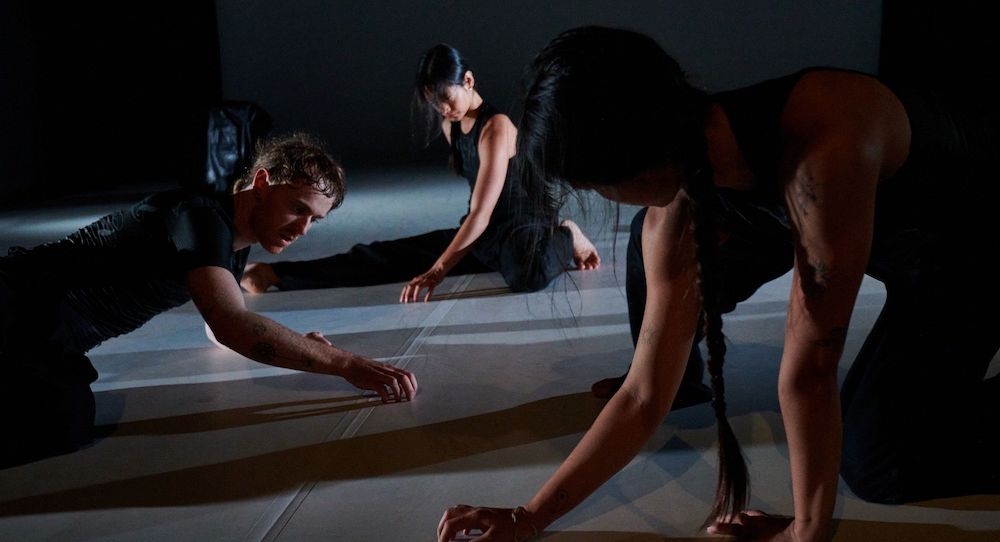Dancehouse, Melbourne.
23 February 2024.
It begins slowly, with dancers’ bodies cloaked, obscured. The score hovers, the white stage bordering on sterile. But then it happens. From crisp abstraction emerges an extraordinary fluidity, an organic engine. Fragile, inexact, yet exhilarating. The flesh vessel we all know, navigating space and time with tenacious beauty.
This is why I love contemporary dance. For nights like this. Flesh Vessel is not just gorgeous, not merely a feat of technique or clever choreography, but a work that is both immediate and metaphoric. Here are three bodies simply moving together, a staged exercise in timing and teamwork, yet here too the power of art to transport, to unleash something in our imaginations.
Because, from the universal touch point of the human body, this work seems to move toward the mechanical. With its highly articulated, pixellated moves, Flesh Vessel has an almost cyborg quality. Echoes of Fritz Lang’s Metropolis and Kraftwerk’s Man Machine aesthetic abound, as the dancers interact like engine parts, moving through and around each other like a well-oiled mechanism.
However, this piece is not simply robotic. Hard, punctuated extensions live alongside sinuous arcs and balletic grace. Indeed, throughout the work the whole body, (hair included), is engaged in a dialogue between the precise and the sensuous. Flesh Vessel is far from cold. Neither is it a cut/copy tech vent. Indeed, perhaps without meaning to, it occupies an imagined and wonderfully choreographed organic/mechanic synthesis.
Creators Jayden Wall and Melissa Pham, along with dancer Ashley Mclellan, deliver an exhilarating evocation of the artform. With its blend of virtuosity, restraint and pure energy, it offers both the unadulterated thrill of movement and the subtler satisfactions of design, architecture, and conceptual play.
Into this mix, Alisdair Macindoe’s soundscapes and the thoughtful minimalism of Giovanna Yate Gonzalez’s lighting fit with seamless effect. Together, they help to underscore the interplay of austerity and generosity that makes Flesh Vessel so rewarding.
If at times we can detect traces of William Forsythe and Hofesh Shechter, as well as the renowned muscularity that tends to typify Australian contemporary dancemaking, these influences are put to good use. We are all derivative; it’s just that some of us do it better.
Likewise, we all travel in a flesh vessel, and we can all dance. However, in this instance, it is clear that Wall, Pham and Mclellan are executing the moves a whole lot better. And I thank them for that, because now I have fallen in love again.
By Paul Ransom of Dance Informa.

















